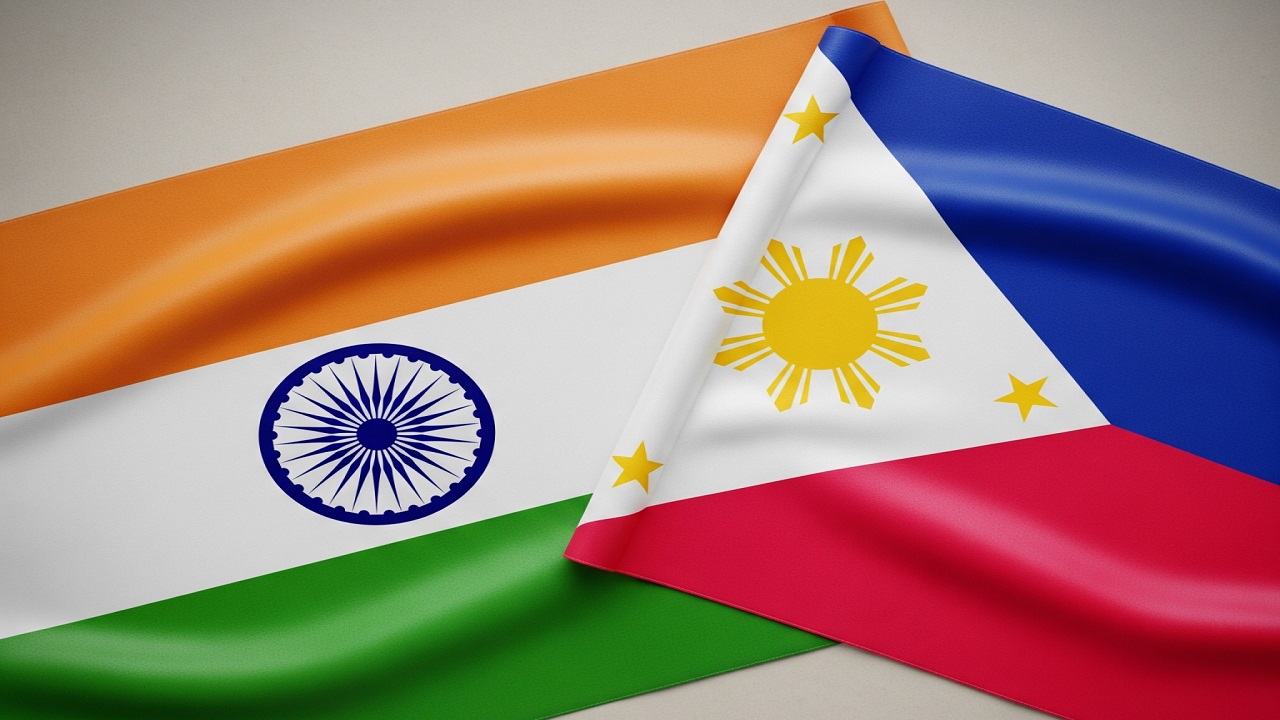India–Philippines Strategic Partnership : Strengthening Defence, Maritime, and Digital Cooperation
Context
In August 2025, during the state visit of President Ferdinand Marcos Jr. to India, both nations signed a Joint Declaration on Strategic Partnership. This agreement marks a significant step in enhancing bilateral cooperation, particularly in defence, maritime security, space technology, and digital infrastructure.
Introduction
India and the Philippines have maintained diplomatic relations since 1949, making it one of the earliest bilateral partnerships in India’s foreign policy history. Over time, the relationship has evolved into a multi-sectoral engagement. The recent upgrade to a Strategic Partnership reflects the growing convergence between the two maritime democracies in strategic, economic, and technological domains.
Key Features of the Strategic Partnership
Strategic Partnership Upgrade
-
Formal elevation of ties to a Strategic Partnership, expanding collaboration across defence, economy, and regional security.
Defence and Maritime Cooperation
-
Terms of Reference (ToR) signed for structured cooperation between Armies, Navies, and Air Forces of both countries.
-
Separate ToR signed for Coast Guard collaboration, covering joint activities and maritime information sharing.
-
Indian naval ships participated in a naval exercise in the Philippines for the first time.
-
India’s hydrography ship participated in joint engagements to support naval mapping and domain awareness.
Trade and Economic Engagement
-
Formal negotiations launched for a Preferential Trade Agreement (PTA) to boost bilateral trade.
-
Bilateral trade stood at USD 3.5 billion in 2023–24.
-
India exports pharmaceuticals, rice, electronics, engineering goods.
-
Imports from the Philippines include semiconductors, ores, machinery.
-
Indian FDI in the Philippines reached USD 5 billion.
Connectivity and Tourism
-
Direct flights between India and the Philippines expected to commence by the end of 2025.
-
India announced one-year free e-tourist visa for Filipino nationals starting August 2025.
Legal and Institutional Cooperation
-
Signed Mutual Legal Assistance Treaty in criminal matters.
-
Signed Treaty on Transfer of Sentenced Persons to enhance consular and legal cooperation.
Digital and Space Cooperation
-
India to assist in a pilot project for the Philippines Sovereign Data Cloud, enhancing digital public infrastructure.
-
The Philippines invited to join the Information Fusion Centre – Indian Ocean Region (IFC–IOR) for maritime security coordination.
-
ISRO to support satellite launches and capacity building in weather and agricultural monitoring.
-
Collaboration with PhilSA highlights India’s growing presence in the global space sector.
Regional and Global Outlook
-
Both countries reaffirmed support for freedom of navigation and overflight in the South China Sea, in accordance with UNCLOS 1982.
-
India reiterated the need for a rules-based Indo-Pacific, describing the South China Sea as a global commons.
Historical Background
-
Diplomatic relations established in 1949.
-
In 2024, the two countries celebrated 75 years of diplomatic ties, with renewed focus on high-level exchanges and institutional dialogues.
Sectoral Cooperation Overview
Defence and Security
-
The Philippines became the first foreign recipient of the BrahMos missile system in 2024.
-
Institutional mechanisms like Joint Defence Cooperation Committee (JDCC) and Service-to-Service dialogues were established.
Maritime Cooperation
-
Conduct of Track-1 Maritime Dialogue.
-
Agreements on hydrographic data sharing and coastal surveillance.
-
Participation in multilateral exercises such as ADMM-Plus, MILAN, and ASEAN–India maritime drills.
Health and Education
-
The Philippines was the first ASEAN nation to approve Covaxin.
-
Around 9,800 Indian students, primarily in medical studies, are pursuing education in the Philippines.
Development and Fintech Cooperation
-
India supported Quick Impact Projects (QIPs) in disaster management and agriculture.
-
Signed MoU on fintech collaboration to promote digital payments and inclusion.
Key Challenges
-
FDI imbalance, with limited investment by the Philippines in India despite growing trade.
-
Delay in implementation of several MoUs, including those in hydrography, space, and tourism.
-
Geopolitical constraints, with the Philippines balancing between Chinese pressure and alignment with India, ASEAN, and the US.
-
Connectivity gaps, with air links and people-to-people exchanges still under-utilised.
Significance of the Partnership
-
Strengthens India’s outreach under the Act East Policy by deepening ties with a key ASEAN member.
-
Supports strategic balancing in the South China Sea, enhancing regional stability.
-
Promotes Indian defence exports to Southeast Asia.
-
Reinforces India’s role as a partner in space, digital governance, and climate resilience.
-
Enhances long-term goodwill through diaspora and educational exchanges.
Way Forward
-
Finalise the Preferential Trade Agreement (PTA) to diversify and strengthen trade.
-
Promote defence co-production in shipbuilding and missile systems under the Atmanirbhar Bharat framework.
-
Launch joint satellite missions focused on weather, disaster management, and agriculture.
-
Institutionalise Track 1.5 dialogues involving think tanks and maritime experts.
-
Leverage new air routes to promote academic and medical tourism, with mutual recognition of qualifications.
Conclusion
India–Philippines relations are entering a new phase of substantive engagement, driven by shared values, strategic interests, and a common vision for a free and open Indo-Pacific. With greater implementation and policy coordination, this partnership can evolve into a key pillar of regional stability and mutual development.




Comments (0)